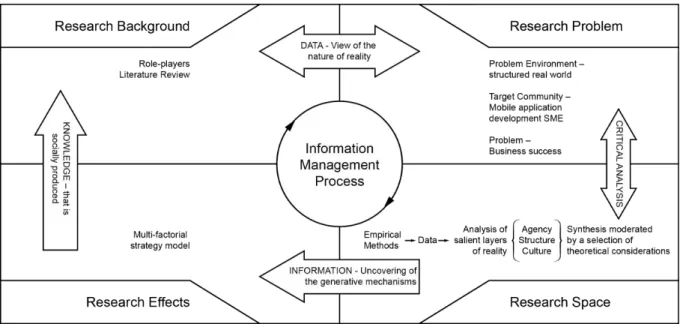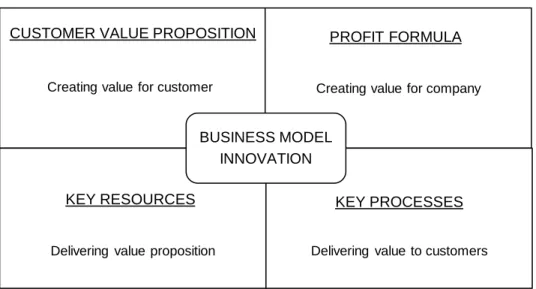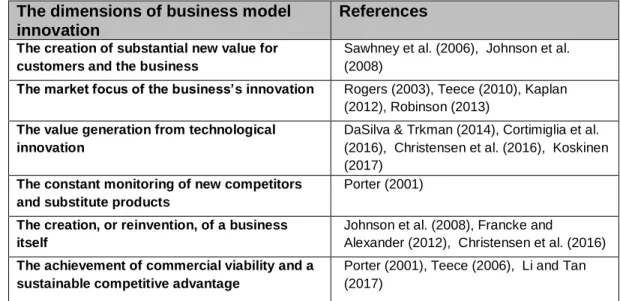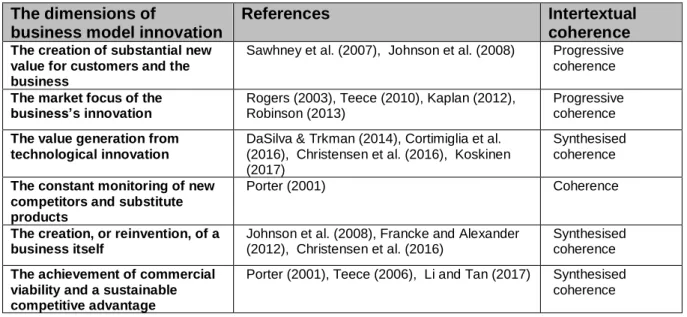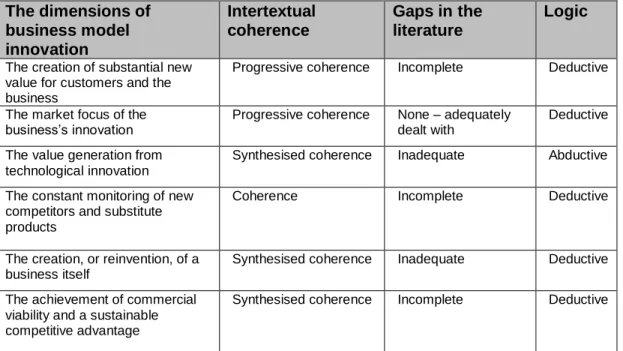The central thesis of this study is that a multi-factorial strategy model can be developed to enable development agencies to contribute to the commercialization of the mobile application development SME sector through business model innovation in response to disruptive innovation. 54 Table 2.12: The main development agencies in South Africa 55 Table 2.13: The possible functions of the development agency 57.
INTRODUCTION
- T ITLE OF THE STUDY
- B ACKGROUND TO THE STUDY
- P URPOSE OF THE STUDY
- R ATIONALE FOR THE STUDY
- I MPORTANCE OF THE STUDY
- R ESEARCH CONTEXT OF THE STUDY
- R ESEARCH PHILOSOPHY OF THE STUDY
- R ESEARCH DESIGN OF THE STUDY
- T HEORETICAL UNDERPINNING OF THE STUDY
- R ESEARCH APPROACH OF THE STUDY
- T HESIS STRUCTURE
- S UMMARY OF THE STUDY
This study focuses on the mobile application development SME as a subset of the SME in the technology sector. This study examines the evolution of a multifactorial strategy model to enable development agency to be a complement in the commercialization of the SME sector for mobile application development through business model innovation in response to disruptive innovation.
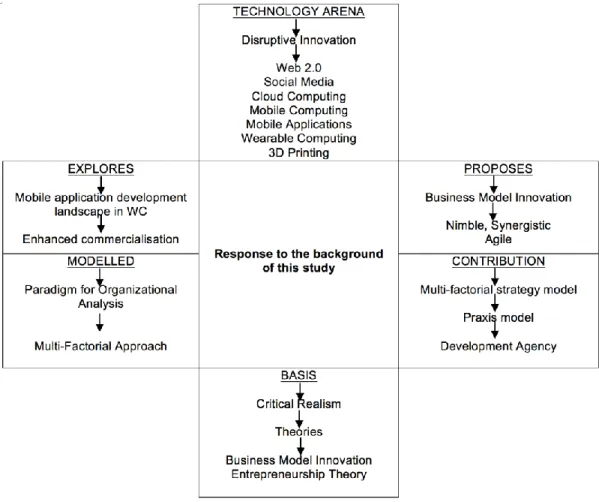
LITERATURE REVIEW
I NTRODUCTION
Some discrete understandings of the three principles would be achieved and together they would provide a theoretical framework for research. The study would primarily review the information technology and business literature, and where possible, look beyond these to inform the three principles.
T HE CONCEPTUAL FRAMEWORK OF THE LITERATURE STUDY
The science of this literature study has been treated in detail by Locke and Golden-Biddle (1997) and Golden-Biddle and Locke (2007) who propose a structured approach to the literature study. Pragmatically, the literature review identified the key principles of this study as formally stated in Chapter 1.
E STABLISHMENT OF A STATE – RESPONSE MODEL FOR THE STUDY
The authors suggest that a model is actually a process of developing and postulating an abstraction of reality. The authors depict three conditions in their model: first, pressure on the environment due to human activities; secondly, the 'condition' of the.
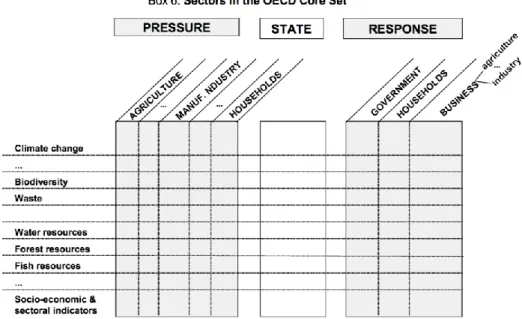
With due regard to the views expressed by Assink (2006), Bo and Qiuyan (2012) and Kaplan (2012), the literature study now explores the field of business model innovation. In addition to discussing what a business model is, the literature review presents a study of business model innovation.
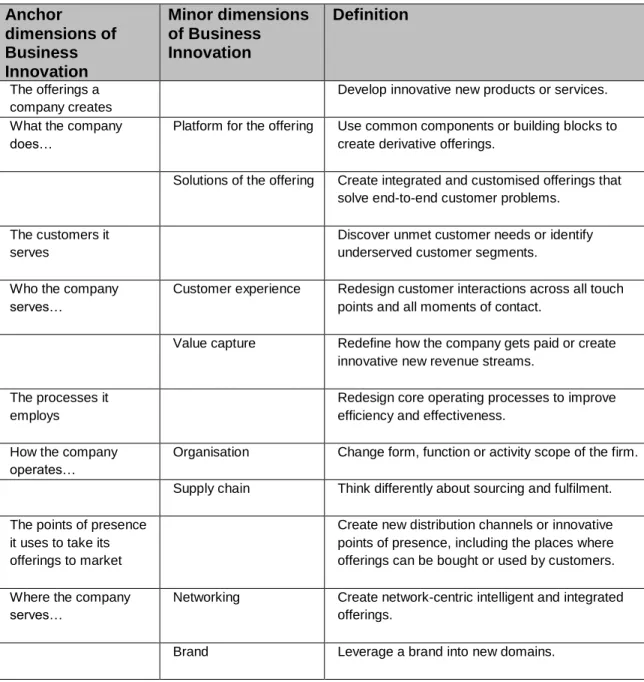
It is therefore obvious that the nature of disruptive innovation is such that it can benefit businesses. With reference to the aforementioned table 2.8 summarizes the contributions of knowledge about the nature of disruptive innovations.
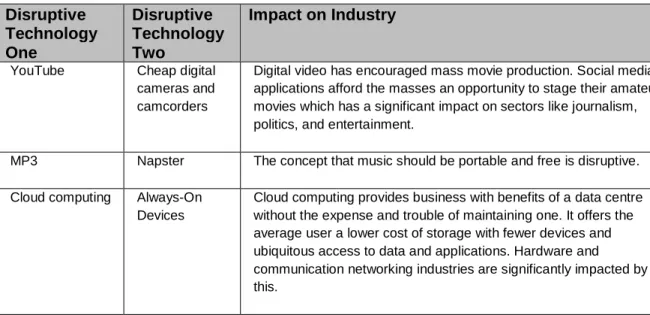
T ENET T HREE : T HE ROLE OF THE DEVELOPMENT AGENCY
This entity is an initiative of the DTI and aspires to play a key role in supporting the development of new technologies in South African industry. Synthesized coherence emerges in the discussion of the capacity-building role that the development agency could play, where there is a relationship between literature contributions from seemingly independent sources. Finally, I will address the fact that the potential role of the development agency is to promote opportunity.
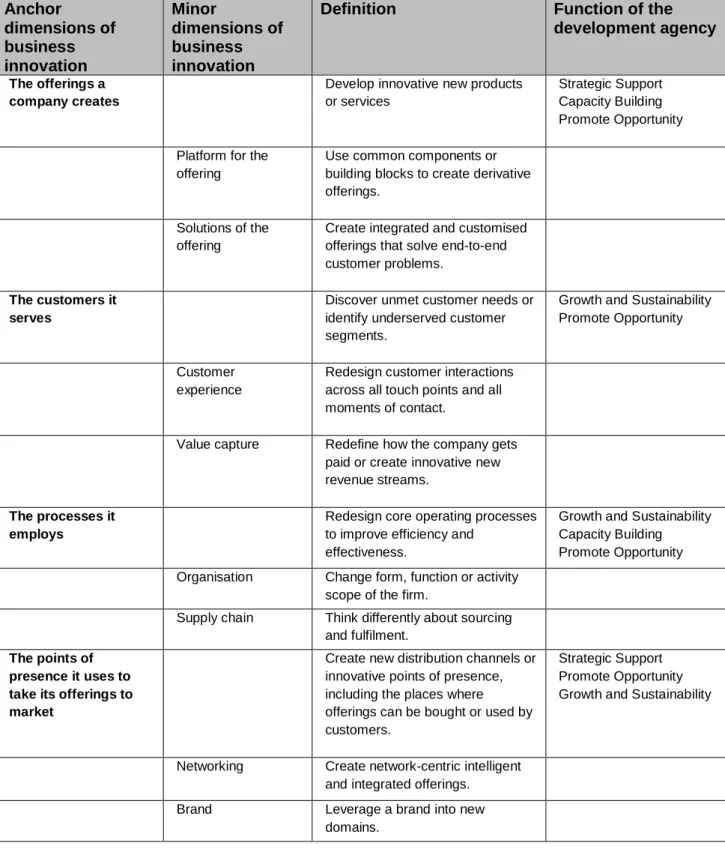
RESEARCH APPROACH AND METHODOLOGY
- I NTRODUCTION
- S OCIO - TECHNICAL RESEARCH
- R ESEARCH PARADIGM
- R ESEARCH METHODOLOGY
- S AMPLING METHOD
- S AMPLING PROCESS
- E THICS
- O VERVIEW OF HOW THE RESEARCH METHODOLOGY WOULD SHAPE THE OUTCOMES OF THE
- S UMMARY
Confirming that there is a synergistic relationship between business model innovation, disruptive innovation and development agency.
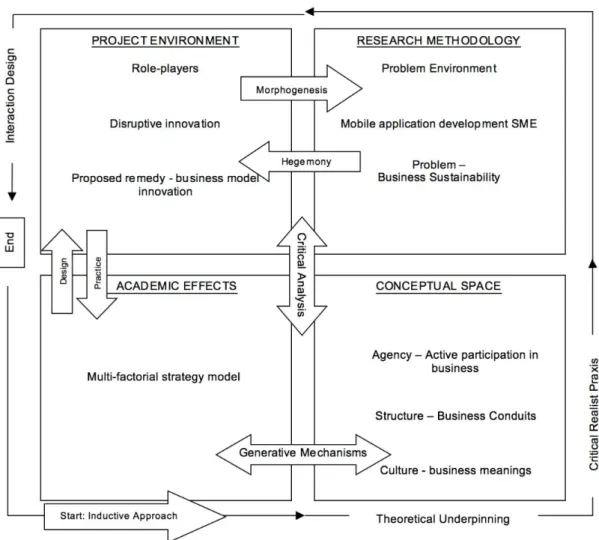
RESULTS
I NTRODUCTION
This chapter describes all the results of this critical realist study that investigated the development of a multifactorial strategy model that allows development agencies to be an amplifier in the commercialization of the SME sector for the development of mobile applications through business model innovation in response to disruptive innovation. This chapter contains some sparse analysis of the results, but basically only the unadulterated results are offered without clarification, conclusion or evaluation. This critical realist qualitative study brings together the factual and interpretive data rather than representing them as isolated findings without an understanding of the causal factors.
A SUMMARY OF THE FIELDWORK
The meetings took place in the cafe and in my office, as well as in the offices of the respective entrepreneurs. The meetings took place in the cafeteria, as well as in the offices of the relevant development agencies. Confirming why SMEs believed in the synergistic relationship between business model innovation, disruptive innovation and development agency.
T HE DEMOGRAPHICS OF THE SAMPLE
P HASE 1 AND P HASE 2 OF THE STUDY
Four of the seven companies were previously involved in mobile application development projects. Key to this topic were questions such as: How can we explain the status quo of mobile app opportunities? This theme stems from the fact that all companies have designed applications for multiple platforms and believed that it does not make business sense to design platform-specific applications as it limits the commercial viability if designed specifically for Android, IOS or BlackBerry.
P HASE 3 OF THE STUDY
The aspect of access to these support services could also be further explored – the mechanisms used by all support agencies to provide support and the ease of access to support measures. The development agency should play a role, not serve as a crutch that will harm SMEs. The product is vulnerable and the SME needs copyright protection and patenting of the mobile application.
P HASE 4 OF THE STUDY
The following table is a representation of the responses and analysis of SMEs in the innovation and technology sector. The SME should make use of the innovation to transform itself into a business that can succeed and be sustainable. 1 Do you agree that it is essential for business to be responsive to unpredictable and disruptive market forces.
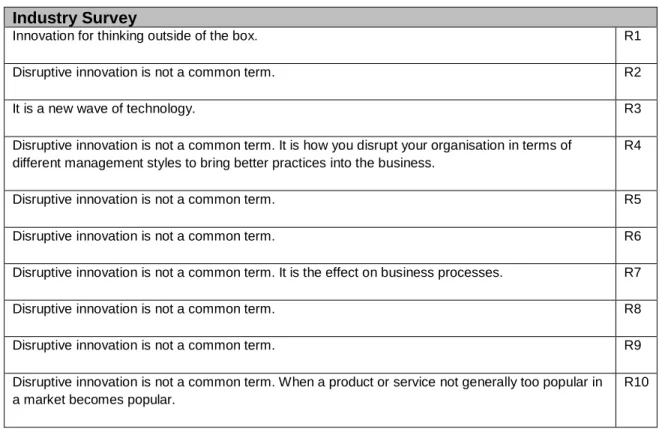
P HASE 5 OF THE STUDY
Why do you think it is crucial for a business to take a new technological solution from a real or perceived need and develop this technology into a viable entity by introducing it to the market? Why do you think it is crucial for a business to pursue the research and development of new products to ensure its sustainability?. If you are first to market and it is unknown, they need a lot of time to educate the market about the benefits.
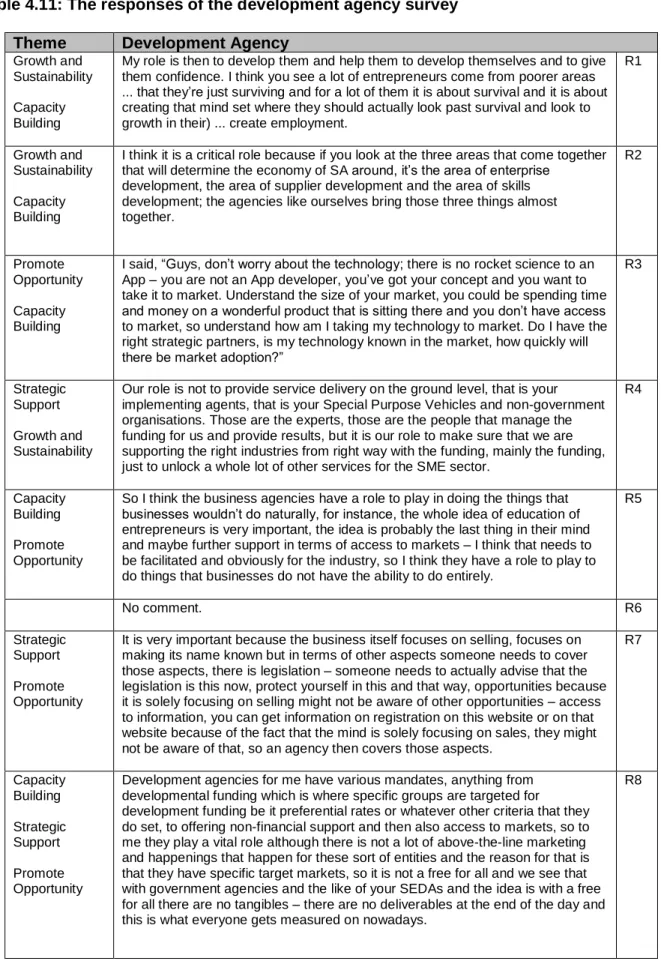
S UMMARY
Product adaptation: Various SME products seem to have evolved from adapting or slightly improving their existing or competing products rather than from developing breakthrough innovations. Customization of services: SMEs appear to have companies that replicate offerings to their customers based on industry norms promulgated by their competitors and suppliers.
ANALYSIS
- I NTRODUCTION
- F INDINGS AND INTERPRETATIONS OF P HASE 1 AND 2 OF THE STUDY
- F INDINGS AND INTERPRETATIONS OF P HASE 3 OF THE STUDY
- F INDINGS AND INTERPRETATIONS OF P HASE 4 OF THE STUDY
- F INDINGS AND INTERPRETATIONS OF P HASE 5 OF THE STUDY
- S UMMARY
The following themes were confirmed in the focus interview as overarching the functions of development agencies when addressing momentum. All SMEs agreed that it is critical for a business to respond to unpredictable and disruptive market forces. The findings and interpretations of this critical realist study revealed the structured real-world landscape of mobile application development in the Western Cape, SA, by identifying its key constructs.
CONCLUSION
I NTRODUCTION
T HE STRUCTURED REAL WORLD OF THE MOBILE APPLICATION LANDSCAPE IN THE W ESTERN
SMEs participate as isolated entities and there is no real serious evidence of networking and collaboration. There is a good enabling environment in SA with the help of the existing infrastructure partners which is superior to the rest of Africa. There is low smartphone penetration in the rest of Africa with a greater feature phone concentration.
K NOWLEDGE OF THE MOBILE APPLICATION LANDSCAPE IN THE W ESTERN C APE OF S OUTH
This fact lends credence to the views of Bhaskar (1978), who argues that agents always reproduce and transform social structures via. Businesses must demonstrate a constant reinvention of the way they operate, including by sharing ideas and operating in a different way than the established norms to improve the business. The role of development agency in the technology sector is to provide access (in its broadest sense) to businesses.
C RITICAL DISCOURSE ANALYSIS OF THE MOBILE APPLICATION LANDSCAPE IN THE W ESTERN
With this in mind, the business model should also change when innovation occurs. It must also provide business support at various levels and help SMEs navigate difficult administrative routes. To ensure success and sustainability, SMEs in this sector need help on how to set up an appropriate business model.
I NTERROGATING THE EMANCIPATION AGENDA AND POWER IMBALANCE OF THE CRITICAL
E XPLORING THE GENERATIVE MECHANISMS THAT CONSTITUTE THE ACTUAL CONDITIONS AND
It can be interpreted that South African businesses are followers and measure themselves to a minimum standard of global compliance. They play primarily for money, but also for personal needs and interests.
U NRAVELLING OF THE THREE TENETS
This study calls on development agencies to foster a culture of disruptive business model innovation within SMEs. In this way this study proposes the value of the synergistic relationship between disruptive innovation, business model innovation and development agency. While they have their individual identities, this study suggests that they generate greater value for SMEs when combined than they could acting independently.
D ISRUPTIVE I NNOVATION S TATE R ESPONSE M ODEL
In its simplest form, the Disruptive Innovation State Response Model proposes two states, namely the state of the company and the disposition required to respond to the disruptive innovation. On the other hand, the company may be required to seek help from outside the organization in order to respond to the disruptive innovation. Ultimately, the Disruptive Innovation State Response Model proposes that companies experience disruptive innovation at different intensities due to different causal forces.
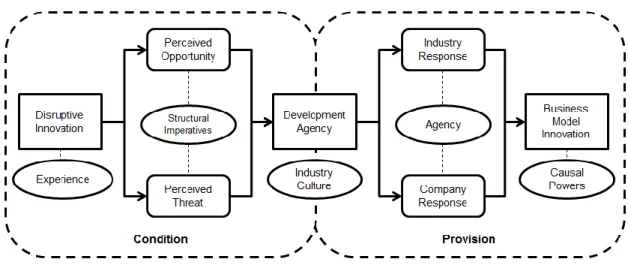
D ISRUPTIVE I NNOVATION P RAXIS M ODEL
As part of its company reform strategy, when the disruptive innovation condition offers more convenient features than those of the incumbent, the company can respond by renewing its model by streamlining business processes. As part of its company restructuring strategy, when the disruptive innovation state offers more improved functionality than the incumbent one, the company can respond by renewing its model by adopting customer interaction to take advantage of improvements. As part of its industry restructuring strategy, when the disruptive innovation condition offers the potential to establish an entirely new operating technology platform, the business can seize the opportunity and respond by renewing its model to innovate and transform the industry's value chain.
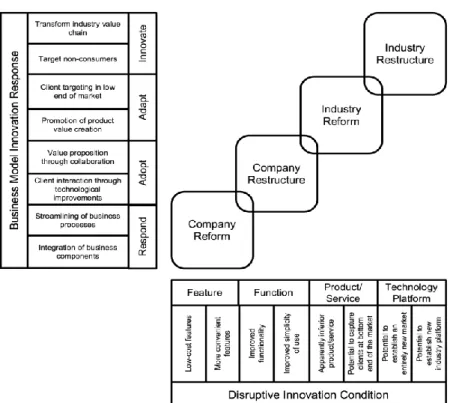
L IMITATIONS AND FUTURE RESEARCH
It considers that in reality stages of the business strategy may overlap or never occur. It is not the intention of the Disruptive Innovation Praxis Model to be prescriptive by serving as an evaluation guide for development agents who decide to grant support to SMEs. Future studies could also involve the application of the Condition-Supply Model, which is an integral part of the Disruptive Innovation State Response Model, to other sectors outside the realm of the technology sector.
C ONCLUSION
We believe that there are already many players in the space and generating revenue from the app is problematic.” Act as an objective evaluator of the company and its gaps and its business model ie. financial and technical, as well as where it is in the market. SA is a very sensitive market, I think it is divided into 3, I will give you a typical example.
Why do you think it is crucial for a business to examine the ways in which it conducts its business in order to improve its service offering. Why do you think it is crucial for a company to pursue research and development of new products to ensure its sustainability.
235

